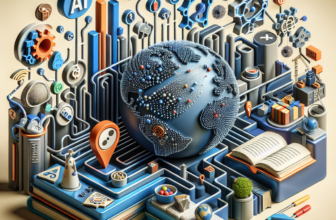Advancements in AI for Image Generation: How Deep Learning Algorithms are Revolutionizing Visual Content

Advancements in AI for Image Generation: How Deep Learning Algorithms are Revolutionizing Visual Content
In recent years, artificial intelligence (AI) has made significant progress in various domains, one of them being image generation. With the advent of deep learning algorithms, AI is now capable of producing high-quality visual content that is both realistic and creative. This remarkable advancement has paved the way for numerous applications in industries ranging from entertainment to advertising, and beyond. In this article, we will delve into the fascinating world of AI for image generation and explore how deep learning algorithms are revolutionizing visual content.
The Emergence of Deep Learning Algorithms
Deep learning algorithms, inspired by the structure and functioning of the human brain, are at the forefront of AI research. These algorithms are capable of learning directly from large amounts of data, making them extremely proficient in complex tasks such as image generation. Training deep learning models requires vast datasets, which in the case of image generation typically consist of thousands to millions of images.
The Power of Generative Adversarial Networks (GANs)
One of the most groundbreaking techniques in AI for image generation is the use of generative adversarial networks (GANs). GANs are composed of two neural networks: a generator and a discriminator. The generator network is responsible for generating new images, while the discriminator network’s role is to differentiate between real and generated images.
During the training process, the generator network learns to produce increasingly realistic images while the discriminator network becomes more adept at distinguishing between real and generated images. Through this adversarial process, the generator gradually improves its ability to create visually appealing and realistic content.
Applications in Entertainment and Advertising
The advancements in AI for image generation have greatly impacted the entertainment industry. Computer-generated imagery (CGI) has become an integral part of modern filmmaking, enabling the creation of stunning visual effects and lifelike characters. Deep learning algorithms have made it possible to generate highly realistic textures and animations, revolutionizing the field of CGI.
In the advertising industry, AI-generated images have opened up a whole new world of possibilities. Advertisers can now easily create personalized and visually engaging content that resonates with their target audience. Deep learning algorithms enable the generation of product images that are indistinguishable from real photographs, making it easier than ever to showcase products in a captivating manner.
FAQs:
1. How do deep learning algorithms generate images?
Deep learning algorithms generate images by training on large datasets and learning patterns from the data. By using techniques such as generative adversarial networks (GANs), the algorithms are capable of creating visually appealing and realistic images.
2. What are some potential applications of AI-generated images?
AI-generated images have a wide range of applications. They can be used in the entertainment industry for creating realistic visual effects and characters. In advertising, AI-generated images can be utilized to showcase products in a more engaging manner. Additionally, AI-generated images can also be used in fields such as fashion, interior design, and gaming.
3. Are AI-generated images as good as real images?
With advancements in deep learning algorithms, AI-generated images have become increasingly realistic and indistinguishable from real images. However, the quality of the generated images depends on factors such as the size and diversity of the training dataset, as well as the sophistication of the deep learning model.
4. Can AI-generated images replace human artists?
While AI-generated images are impressive, they do not replace the unique creativity and artistic intuition of human artists. AI can assist artists in generating ideas or creating realistic drafts, but the creative vision and artistic expression still largely rely on human involvement.
5. What challenges does AI face in image generation?
Despite the remarkable progress, AI still faces challenges in image generation. Generating high-resolution images can be computationally expensive and time-consuming. AI also struggles with generating coherent and contextually relevant images without explicit supervision. As research progresses, these challenges are being addressed, leading to further advancements in AI for image generation.
In conclusion, the advancements in AI for image generation, fueled by deep learning algorithms, have revolutionized the way visual content is created. From entertainment to advertising, the application of AI-generated images has opened up new avenues for creativity and engagement. As technology continues to evolve, we can expect even more exciting developments in the field of AI for image generation.
<\html>







